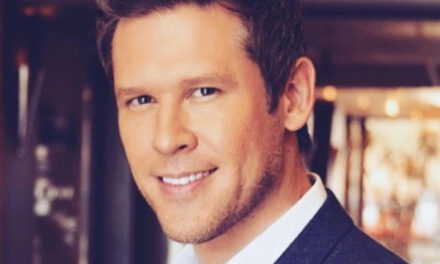Nathan Heddleston is an accomplished leader with a diverse background that bridges the worlds of athletics, education, and operations management, showcasing his forward-thinking, results-driven approach to problem-solving. Born and raised in East Liverpool, Ohio, Nathan’s passion for discipline and performance excellence began early, honed through his participation in track and field. He pursued higher education at the University of Mount Union, earning a Bachelor of Arts in English and Education, before advancing his studies at Nova Southeastern University, where he achieved a Master of Arts in Teaching and Learning, graduating with a perfect 4.0 GPA.
Nathan’s career kicked off in athletics as a standout track and field coach, where his leadership skills and strategic mindset drove multiple NCAA National Championships. Transitioning into the business world, he leveraged his deep understanding of performance optimization and team dynamics into operations and logistics management roles. His career is defined by his relentless pursuit of operational efficiency, process improvement, and innovation.
With a keen eye for scalability and a passion for building high-performance teams, Nathan excels in developing streamlined systems that enhance operational output while driving customer satisfaction. He’s a believer in continuous learning and integrating technology solutions to solve complex problems, making him a natural fit in fast-paced, high-impact environments. Nathan is equally passionate about mentoring the next generation of leaders and fostering a culture of collaboration and adaptability. His career trajectory is a testament to his ability to evolve, excel, and push boundaries in both the athletic and business arenas.
Nathan, people don’t often think of parking as a “big business.” What’s the biggest misconception about the industry?
I think the biggest misconception is that parking is just about finding a spot for your car. People see parking lots or garages and think, “How hard can that be?” But it’s actually much more complex. Parking is a logistics and operations game. It involves technology, customer service, space management, and even urban planning. There’s a lot that goes into ensuring people can park safely, efficiently, and without frustration, especially in busy cities.
So it’s not just about parking cars. What else is involved?
Exactly! Beyond the basic parking of cars, we’re managing the flow of traffic, the safety of the facility, and sometimes even integrating technology like automated systems or apps that let you reserve spots in advance. There’s also the maintenance aspect—keeping the facilities clean, well-lit, and secure. And then there’s pricing strategy, capacity management, and customer experience, which are critical to making sure people leave happy and want to come back.
That’s interesting. Does technology play a big role in parking now?
Oh, absolutely. It’s a game-changer. From mobile apps that let people find and reserve spots to automated payment systems, technology has streamlined the parking experience. We’re seeing a shift toward contactless payments and license plate recognition systems that make parking more efficient. It’s all about reducing friction for the customer and improving the flow of operations on our end.
What’s the biggest challenge you face in the parking business?
One of the biggest challenges is balancing supply and demand. In dense urban environments, you can’t always build more parking spaces, so you have to maximize the use of existing ones. That means using data to understand peak times and optimize turnover rates. Another challenge is staying ahead of evolving technologies and customer expectations. People want convenience and speed, and they’re not willing to wait in long lines or deal with clunky systems. So, constant innovation is key.
Is sustainability a factor in the parking business?
Definitely. We’re starting to see a big push for sustainability in parking. Whether it’s incorporating solar panels on top of parking structures or building charging stations for electric vehicles, the industry is moving toward greener solutions. Vertical and underground parking can also help reduce the urban footprint. It’s about making parking not only efficient but also environmentally responsible.
People might think parking is boring. How do you keep it interesting?
(laughs) Yeah, I get that! But for me, it’s the challenge that keeps it interesting. It’s a constant puzzle—how can we improve operations, reduce costs, and enhance the customer experience all at once? And honestly, when you’re managing multiple facilities, dealing with clients, and implementing new technologies, there’s never a dull moment. Every day brings new challenges and opportunities.
What’s one thing people might be surprised to learn about parking management?
I think people would be surprised at how much customer service is involved. It’s not just about finding a spot—it’s about ensuring people feel safe, that they’re getting value for what they pay, and that their experience is seamless from start to finish. We even deal with things like customer complaints, lost vehicles, and sometimes more serious incidents like accidents or thefts. Managing parking is really managing people, in a way.
If someone wanted to get into the parking business, what advice would you give them?
Be open-minded and ready to learn. It’s not as simple as it looks from the outside. You need to have an eye for detail, be good at problem-solving, and be willing to embrace new technologies. Parking might seem like a small part of a city’s infrastructure, but it’s crucial, and if you’re good at it, you can really make a difference in how smoothly everything runs. It’s also important to remember that it’s a people business at its core—building relationships and delivering good service are just as important as the operational side.




